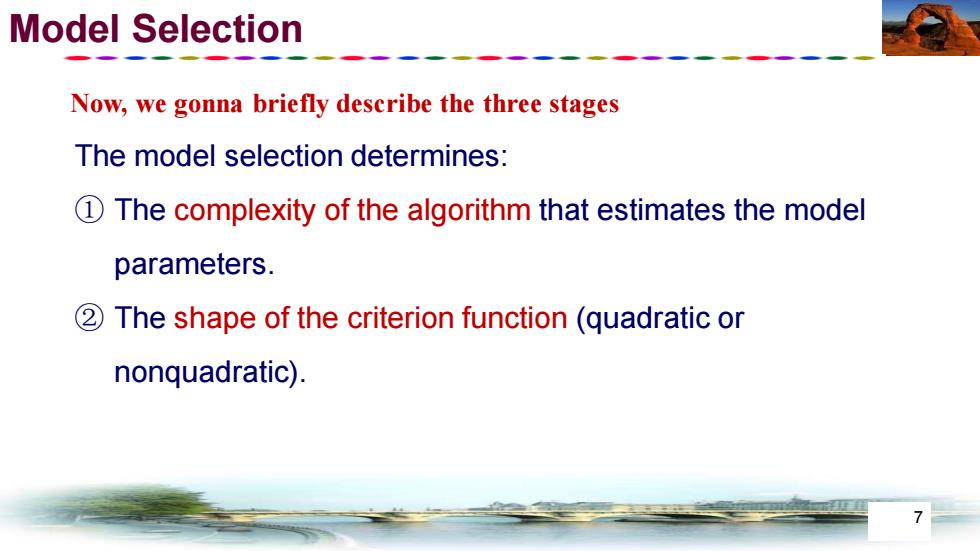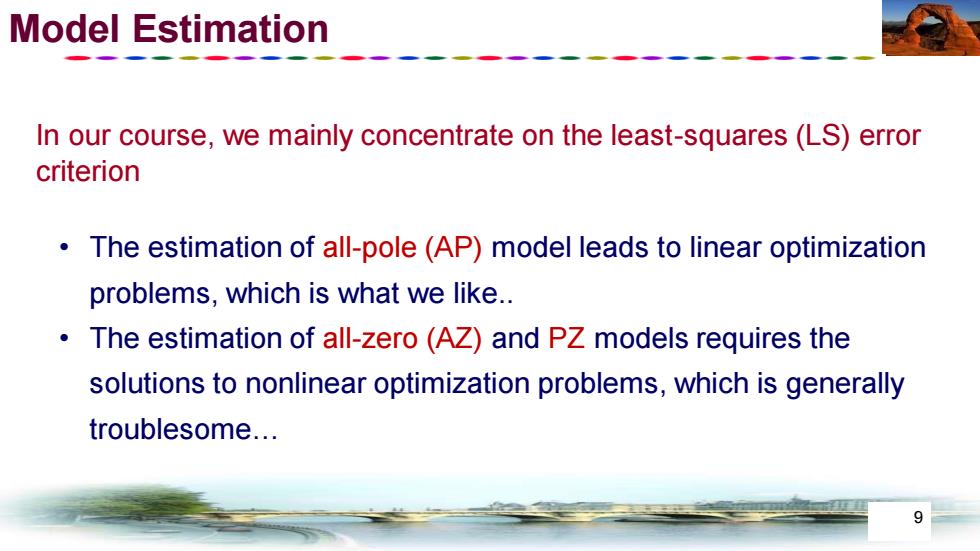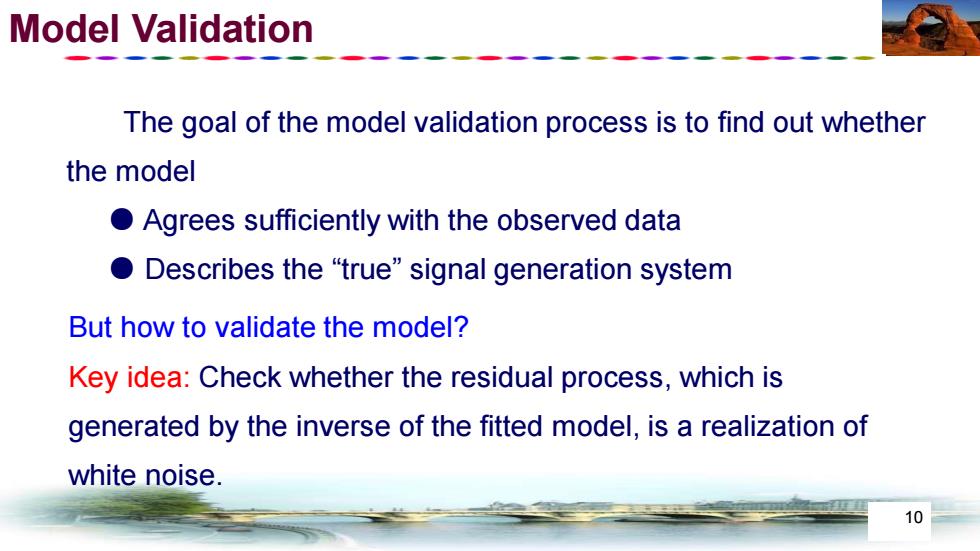
Model Selection Now,we gonna briefly describe the three stages The model selection determines: 1 The complexity of the algorithm that estimates the model parameters. 2 The shape of the criterion function(quadratic or nonquadratic)
7 The model selection determines: ① The complexity of the algorithm that estimates the model parameters. ② The shape of the criterion function (quadratic or nonquadratic). Model Selection Now, we gonna briefly describe the three stages

Model Estimation Model estimation is also known as model fitting Particularly,we use the available data to estimate the parameters of the selected model,by using the optimization of some criteria(e.g.maximum likelihood,spectral matching)
• Model estimation is also known as model fitting • Particularly, we use the available data to estimate the parameters of the selected model, by using the optimization of some criteria (e.g. maximum likelihood, spectral matching). Model Estimation

Model Estimation In our course,we mainly concentrate on the least-squares(LS)error criterion The estimation of all-pole(AP)model leads to linear optimization problems,which is what we like. The estimation of all-zero(AZ)and PZ models requires the solutions to nonlinear optimization problems,which is generally troublesome. 9
9 In our course, we mainly concentrate on the least-squares (LS) error criterion • The estimation of all-pole (AP) model leads to linear optimization problems, which is what we like. • The estimation of all-zero (AZ) and PZ models requires the solutions to nonlinear optimization problems, which is generally troublesome. Model Estimation

Model Validation The goal of the model validation process is to find out whether the model O Agrees sufficiently with the observed data ●Describes the“true”signal generation system But how to validate the model? Key idea:Check whether the residual process,which is generated by the inverse of the fitted model,is a realization of white noise. 10
10 The goal of the model validation process is to find out whether the model ● Agrees sufficiently with the observed data ● Describes the “true” signal generation system But how to validate the model? Key idea: Check whether the residual process, which is generated by the inverse of the fitted model, is a realization of white noise. Model Validation

Model Validation The whiteness of the residual signal can be checked by the following statistical techniques Autocorrelation test(自相关检测) Power spectrum density test(功率谱密度检测) Partial autocorrelation test(部分自相关检测)
11 •Autocorrelation test(自相关检测) •Power spectrum density test(功率谱密度检测) •Partial autocorrelation test (部分自相关检测) The whiteness of the residual signal can be checked by the following statistical techniques Model Validation